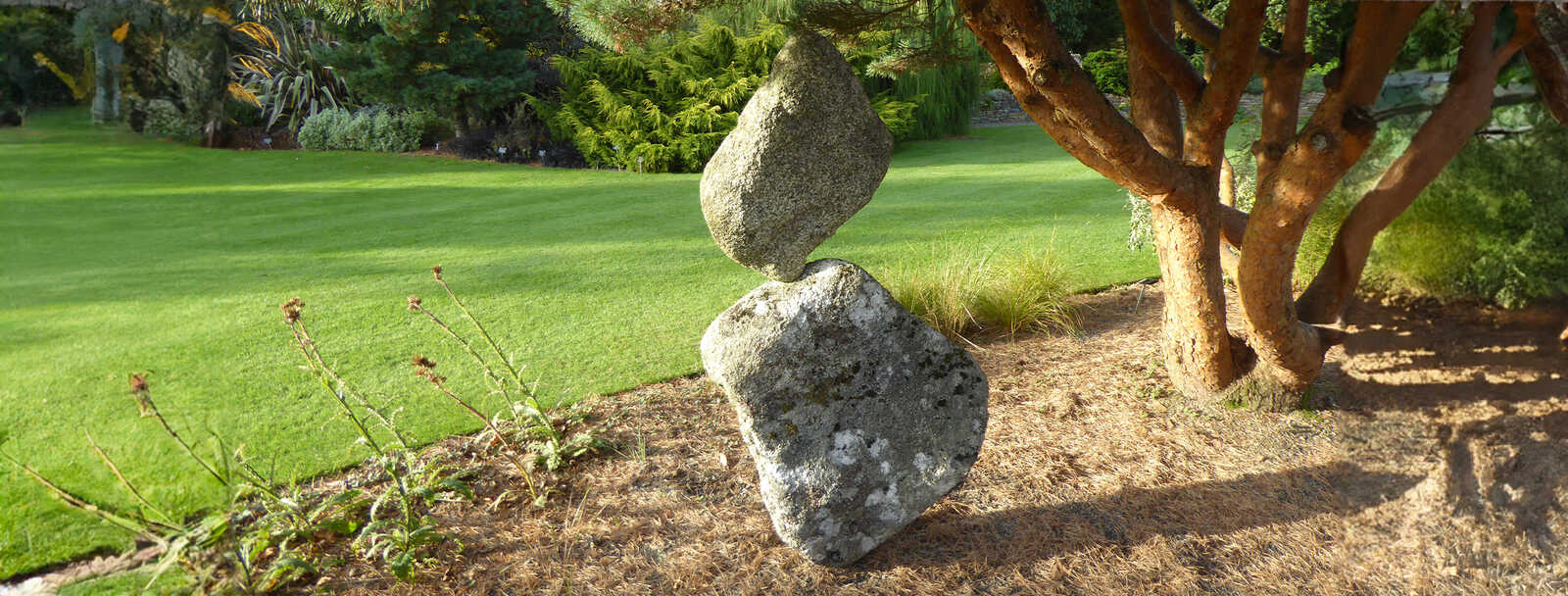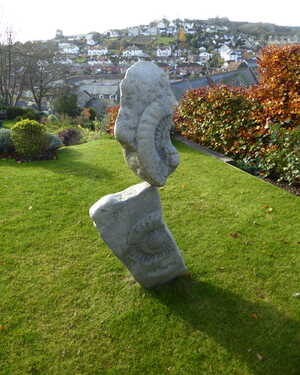
Adrian Gray
Stonebalancing Pioneer
Adrian Gray is the pioneer of stonebalancing art. He works predominantly with sculpture and photography, exploring the natural world of balance. He creates balancing sculptures using weathered stone ranging in size from small tactile rocks to massive granite boulders.
These sculptures are discreetly secured in their balanced position to be installed safely in homes, gardens and commercial settings. Adrian films the initial balance before fixing and installing the sculpture in its new location. Each owner of an Adrian Gray sculpture receives a video showing the balancing process.
To show live examples of his work, Adrian performs stonebalancing demonstrations at exhibitions and events, creating new ephemeral sculptures.
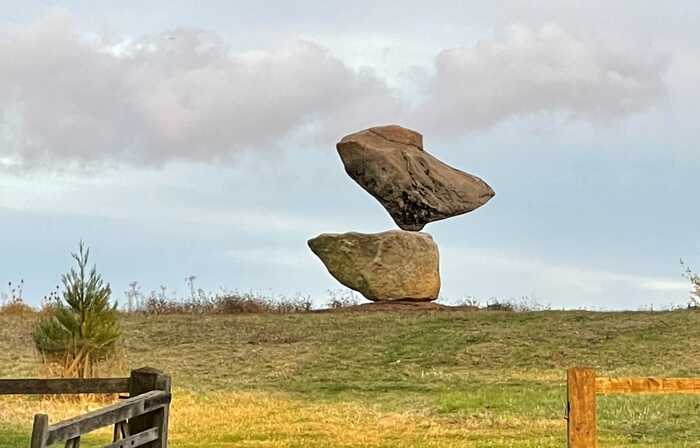
Equipoise / ek-wi-poyz. n. Balance of natural forces.

Only in nature is there balance, perfect balance.
In nature there is no such thing as imperfect balance: everything has its time and its place, its purpose the continuing function of the planet. In the 150 years since the start of the industrial revolution, man has been hellbent on upsetting that balance, and has had some success. But fear not: nature will prevail eventually, because balance is continuous, with no exceptions. It’s just a matter of time.
My time, over the past two and a half decades, has been spent almost solely in the pursuit of the creative balancing of stones. The catalyst, a period of dark times and solitude, inspired in me an original concept: to build sculptures from naturally weathered rocks and stones that would have an improbable composition and simplistic beauty. For me it’s the simplicity of my work that makes it magical, and on making this discovery I also found a perseverance to achieve one aim – to create art that inspires a sense of wonder. I have been fixated on this goal, knowing from my own feelings and the reactions and encouragement of others that what I was doing had meaning and value. To follow this path involved risk – financial and emotional – but risks are what make us feel more alive.
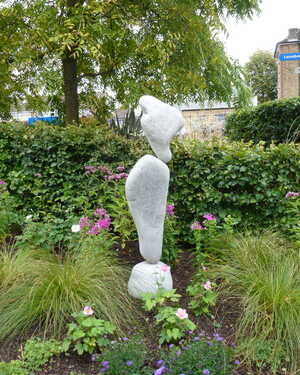
The Balancing Process
The process of balancing the stones is performance art in a very pure form. The audience can witness the creation of a sculpture, but the very process of balancing the stones has been called many things, some contradictory: calming, tense, therapeutic, mesmerising, beautiful, puzzling and even spiritual. It has a meditative quality: it forces you to ignore the continual chattering in your head and absorb yourself in the process of the balance. You ‘listen’ with your fingers, your focus targeted and complete. Fundamentally, you find the stillness inside yourself and become one with the stones. Balancing by hand is intuitive: by making minute movements, thinking about the orientation of the stone and the distribution of weight over the point of contact between the stones, the balancing point can be achieved.
For many, my sculptures seem alive, they have a presence. People react in different ways, sometimes with strong emotions. This, of course, can be the purpose of art: to disturb you, to leave you uneasy with yourself and wary of the world, to undermine your sense of reality and make you reconsider all that you think you know. The finest art should shatter your beliefs, devastate your intellect, leave you perplexed and make you doubt the conventions that bind us, weigh us down and drown us in a sea of conformity. If I achieve any of these, my job is done.
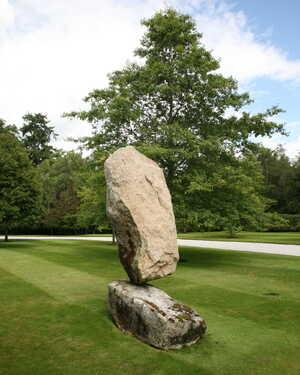
Naturally Simplistic
My work needs no elaborate explanation or complex deconstruction; I want people to form their own ideas about what it means to them. By its very simplicity, by the use of natural stones, by its rational obedience of the laws of nature, it speaks for itself. If you were to ask me why the sculptures can have such an impact, I would tell you about the paradox. The paradox of fragility and solidity. The fragile nature of the balance versus the solid nature of the stones. This might be enough for some, but others need more: they want the elaborate explanation. The point, however, is that my work is interesting and fun, because everyone and anyone can express their opinions, criticising or liking with equal justification and merit.
After several years of creating transient work, I found that more and more people were asking if they could place these pieces in their gardens. I devised a method of fixing the sculptures exactly in their balanced position so they could be installed safely while retaining their sense of wonder and improbability.
Although I don't think my sculptures need wordy explanations, I would like to think they symbolise the efforts many people are making to improve the environment and keep our beautiful planet in balance.
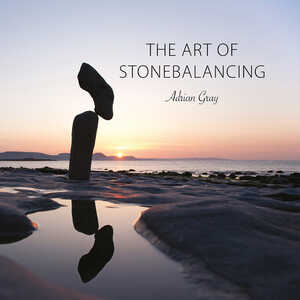
my book
The Art of Stonebalancing
A sumptuous book of over 150 pages. A superb collection of high-quality photographs and informative descriptions by the artist, charting the evolution of his stonebalancing art.
** Sold out!**
I know Adrian Gray through his visits to River Cottage, where his displays at our events always draw an awe-struck crowd. It’s hardly surprising: there is nothing so compelling as watching someone achieve the impossible before your very eyes... Adrian’s balanced stones appear magical – and their effect is certainly spellbinding. But Adrian would never claim to be a magician. He is an artist and a craftsman. One of the delights of his shows and exhibitions is his willingness to engage with his audience, answering questions and telling his story... Of course Adrian has a touch and a concentration that is beyond comprehension for most of us. Creating each sculpture is a task both physical and metaphysical. Watching him work, he seems to be operating in a mental space somewhere between profound concentration and weightless meditation. This dichotomy is conveyed when Adrian walks away, and you look at the finished works. They exude a sense of timeless calm, yet paradoxically also seem taut with trapped energy.
Adrian’s own story is fascinating and salutary. As you will read, he has had to overcome some considerable challenges. That he has done so with such energy, and forged a creative life in a beautiful place, doing something that he loves to do and that brings pleasure to others, is inspiring. That’s a word we bandy about a lot. But I haven’t chosen it lightly here. I’m sure Adrian’s story, and his work, really will inspire others to overcome their struggles, and find peace and purpose in the world. I think Adrian would agree that the work cannot be separated from the life. He has talked about his art as a counterpoint to the post-industrial manmade chaos – the unbalanced world – that surrounds us. And I think that is a key part of its appeal. Balance is something we all crave yet so often fail to achieve.
Adrian’s work invites comparison with other manipulators of the natural world such as Andy Goldsworthy. Art like this can’t help but make us think about the way humankind interacts with the environment – and that is surely part of the artist’s motivation. But I think Adrian’s work is ultimately celebratory, and full of hope. The ancient stones that he uses, and the glorious landscapes and gardens in which he sets them, are simply lovely to look at. For Adrian, there is of course a great investment of labour, time and skill in the finding, balancing and placing of his materials. But for the viewer, the pleasure is effortless. Each sculpture in this book captures a moment of perfect pivotal stillness against the backdrop of a shifting world: something that is beautiful, just because it is.
Hugh Fearnley-Whittingstall
From the foreword to 'The Art of Stonebalancing'

